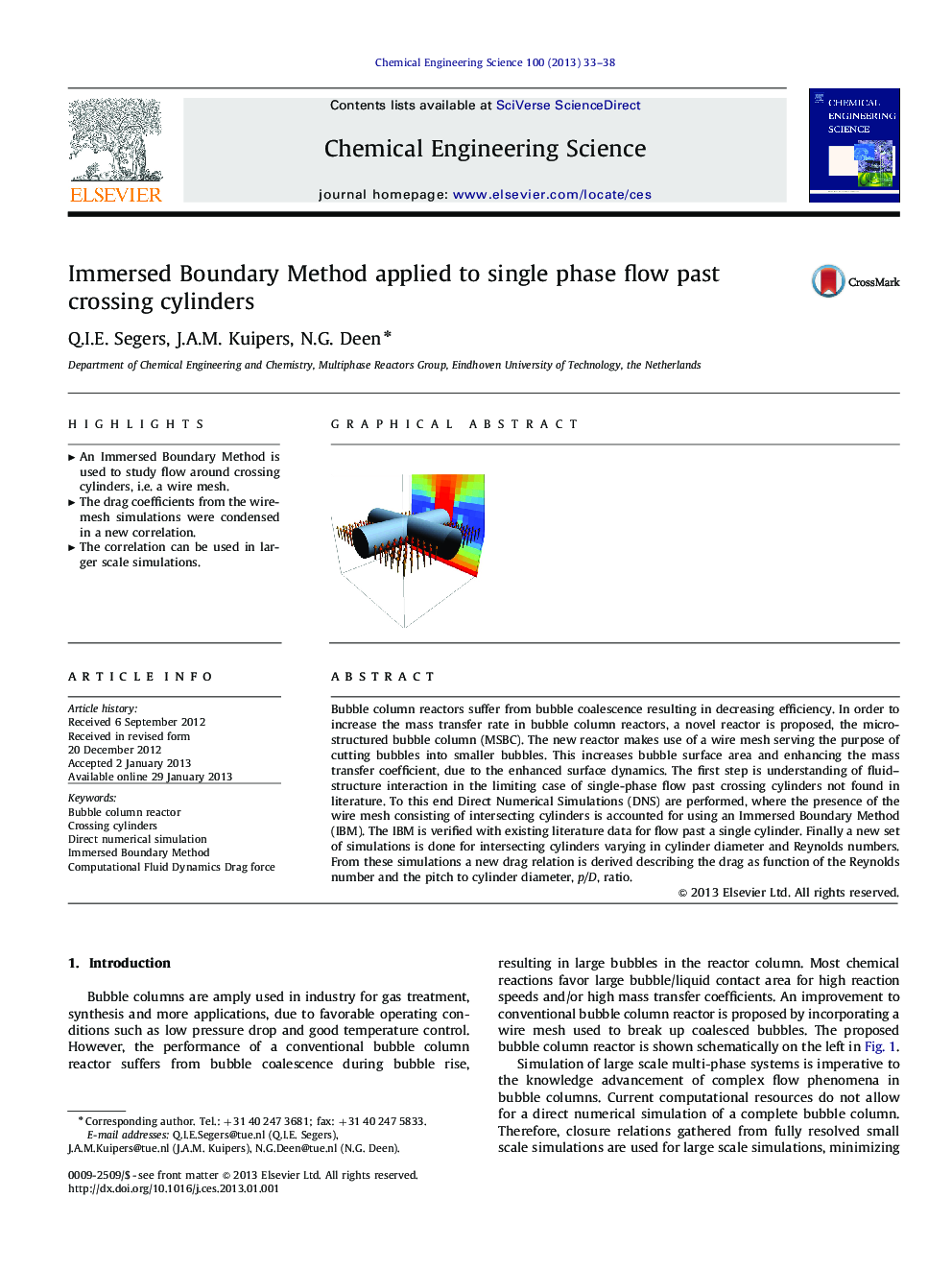| کد مقاله | کد نشریه | سال انتشار | مقاله انگلیسی | نسخه تمام متن |
|---|---|---|---|---|
| 155049 | 456883 | 2013 | 6 صفحه PDF | دانلود رایگان |

Bubble column reactors suffer from bubble coalescence resulting in decreasing efficiency. In order to increase the mass transfer rate in bubble column reactors, a novel reactor is proposed, the micro-structured bubble column (MSBC). The new reactor makes use of a wire mesh serving the purpose of cutting bubbles into smaller bubbles. This increases bubble surface area and enhancing the mass transfer coefficient, due to the enhanced surface dynamics. The first step is understanding of fluid–structure interaction in the limiting case of single-phase flow past crossing cylinders not found in literature. To this end Direct Numerical Simulations (DNS) are performed, where the presence of the wire mesh consisting of intersecting cylinders is accounted for using an Immersed Boundary Method (IBM). The IBM is verified with existing literature data for flow past a single cylinder. Finally a new set of simulations is done for intersecting cylinders varying in cylinder diameter and Reynolds numbers. From these simulations a new drag relation is derived describing the drag as function of the Reynolds number and the pitch to cylinder diameter, p/D, ratio.
Figure optionsDownload high-quality image (126 K)Download as PowerPoint slideHighlights
► An Immersed Boundary Method is used to study flow around crossing cylinders, i.e. a wire mesh.
► The drag coefficients from the wire-mesh simulations were condensed in a new correlation.
► The correlation can be used in larger scale simulations.
Journal: Chemical Engineering Science - Volume 100, 30 August 2013, Pages 33–38